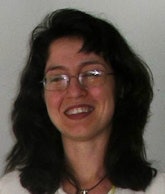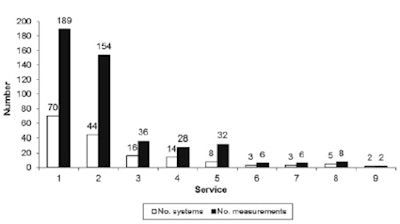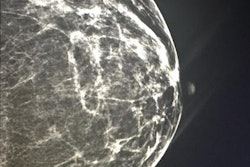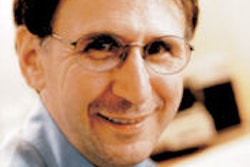
In advance of the introduction of breast screening in Bulgaria, new quality control (QC) evidence reveals that issues affecting mammography practice have drastically improved since QC was introduced eight years ago across the country.
The nonfunded study coordinated by the National Center of Radiobiology and Radiation Protection (NCRRP) and initiated in 2013, showed a significant reduction of established deviations from 65% during the first year to 7% in the last year. The authors believe this research will help to establish remedial and suspension limits for digital mammography equipment at governmental level.
"We intended to see what the impact of QC introduction in 2005 was on mammography practice," lead author Dr. Simona Avramova-Cholakova, PhD, told AuntMinnieEurope.com. "We chose mammography because it is a special field; a mammography screening program is expected to be introduced in the country in the future and it is important to understand the situation for mammography equipment performance."
 QC guidance must be updated to reflect changes in technology, according to Dr. Simona Avramova-Cholakova, PhD.
QC guidance must be updated to reflect changes in technology, according to Dr. Simona Avramova-Cholakova, PhD.Questionnaires about the most important parameters routinely measured during QC were sent to nine service providers in the countrywide study. These focused on the technical performance of mammography equipment and its conformity with the, "European protocol for the quality control of the physical and technical aspects of mammography screening," adopted in Bulgarian legislation in 2005 (Ordinance No. 30 for protection of individuals subjected to medical exposure). All nine QC service providers responded (Radiation Protection Dosimetry, 1 April 2015).
A total of 165 systems were reported with 461 tests. According to the information from the NCRRP database, 146 mammography systems were functioning in the country in 2006, while this number increased to 172 in 2010 and to 179 in 2014. The research team believes most of the mammography systems in Bulgaria were included in this study. The NCRRP database indicates that from 2006 to 2010, 18 systems were suspended from clinical use because of their poor performance and noncompliance with the regulatory requirements.
Across the eight-year review, most of the deviations from remedial and suspension limits were observed for radiation output, kV accuracy, and optical density of the film at routine exposure. Less frequently observed were the deviations of object thickness/tube voltage compensation of automatic exposure control, incident air kerma, and view box luminance. Analysis of the data also revealed some methodological issues.
 Number of mammography systems and number of tests reported by each QC service. Data from annual and semiannual tests are included. Source: Radiation Protection Dosimetry.
Number of mammography systems and number of tests reported by each QC service. Data from annual and semiannual tests are included. Source: Radiation Protection Dosimetry.The study found that corrective actions were made in 42% of the cases of deviations, and within the next QC, it was found that the results were already in the limits. In 8% of cases, no actions were taken and the problem lasted until the next measurement. Information about a correction was missing in 50% of the cases because of the absence of a protocol provided by the QC service, due to either change of the QC service provider or system excluded from usage.
The study pointed to better performing mammography systems that will have a positive impact on the quality of the whole diagnostic process, according to Avramova-Cholakova, who is head of the Radiation Protection at Medical Exposure Section at the NCRRP.
However, there is no requirement in legislation to regularly test the performance of automatic exposure control and digital detectors. She thinks the study highlighted the need for updated guidance and training of medical physicists to reflect changes in technology.
"Strengthening the capacity of radiation inspectorates and optimization of their activities is needed to support the optimization of the clinical practice," noted Avramova-Cholakova et al, who said similar studies of general radiography systems, CT, and fluoroscopy could be useful, but these would be difficult to organize because of the large number of x-ray systems and measurements performed across the country. In addition, the latest study was made possible by the voluntary work of medical physicists who collected and analyzed the data.
"We hope that the results of this study will demonstrate to medical staff the importance of regular QC and convince them to collaborate more closely with medical physicists when measurements are performed," Avramova-Cholakova added. "Data from the study have already been presented on radiation protection courses attended by radiologists, radiographers, and other medical staff. We expect other benefits to include a greater awareness by medical physicists that some inaccuracies can occur during QC measurements. Furthermore, at governmental level we expect remedial and suspension limits for digital mammography equipment to be introduced," she said.



















